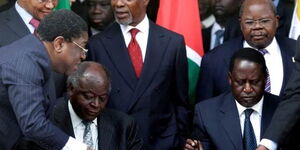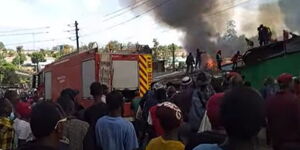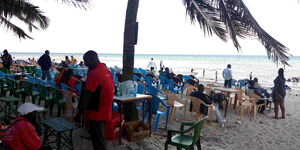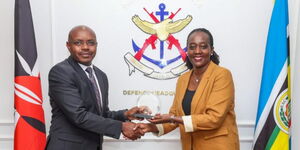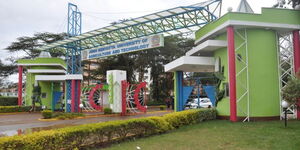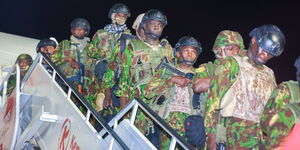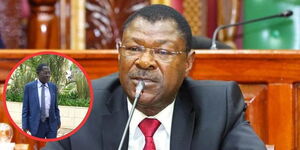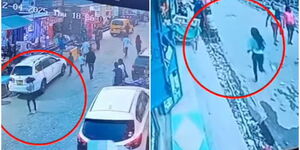During the peak hours of air travel, hundreds of aircrafts criss-cross the Kenyan airspace heading to various destinations. And as a matter of fact, it would be impossible to think about flying without having Jomo Kenyatta International Airport (JKIA) come into your mind.
But have you ever thought about how those air vessels depart or land at various airports without colliding? For travelers, it may not be a big deal since theirs is to enjoy a cool journey over the clouds and across the skies.
As you are seated in your comfortable seat in the plane, it is never an effortless moment for the pilot who keeps engaged with air traffic controllers all through the journey, with the intention of propelling the air vessel to the designated destination.
The role of ensuring the safe operation of planes falls on the shoulders of air traffic controllers, who work in tandem with the pilots to counter all the complexities both at the airport and while en route. The controllers help pilots to navigate through challenges such as bad weather or missing routes.
However, traffic control is not only about the controllers at the airports' towers but is also a more complex system running from ground controllers to services from distance in-room men and women who may be located outside an airport.
Pilots adhere to land laws regulating air mobility within particular airspaces while receiving instructions from air traffic controllers. However, the pilots in command may deviate from the instructions in the case of an emergency, if they believe their independent decision is for the purpose of the safety of the aircraft.
Before leaving an airport, your pilot inspects the plane following particular guidelines. They then file a flight plan that includes the airline number, flight number, type of aircraft, cruising speed, altitude, and the intended route. The plan is filed through transmission to the airport tower 30 minutes before the anticipated departure time.
The air traffic controller at the tower receives the plan, inspects it and checks weather conditions on the proposed route. If the plan satisfies all the requirements, the controller feeds the details in the plan into a host computer.
The host computer then generates a flight progress strip containing the tracking data that shall be transmitted from one controller to the other throughout the journey.
The strip then gets back to the pilot and the ground controller, who guides the plane as it taxis through the runways. The ground controller keeps communication with the pilot through radio, informing them of the safe and inactive runways and recommends which they should use. The ground controller also ensures that the pilot does not collide with ground vehicles and once it's safe and ready to take off, they pass the trip to the local controller.
The local controller inspects the skies while ensuring that other close planes are at a safe distance, giving a green light for the pilot to take off once they deem the sky safe. However, the final decision lies on the pilot, who, upon feeling safe, accelerates the plane down the runway and takes off, after which the strip gets to the departure and en route controllers.
Once the plane has taken off, the pilot activates a device in the aircraft called the transponder, which detects incoming signals, launching the official tracking of the vessel as it progresses with the journey. In the event that the aircraft passes through airspaces manned by different authorities, the progress strip passes from one center controller to the other until the plane reaches its destination.
The center controllers inform and advise the pilots on the weather and whether the route followed is the right one.
The approach controller then takes charge of directing the pilot on the right altitude to adjust to, the speed and other landing preparations.
On the other hand, the local controller at the destined airport checks the skies and the safety of the runways using binoculars, giving the pilot clearance to land. The local controller then passes the role to the ground controller, who guides the aircraft through the runways until parked at the designated area.

